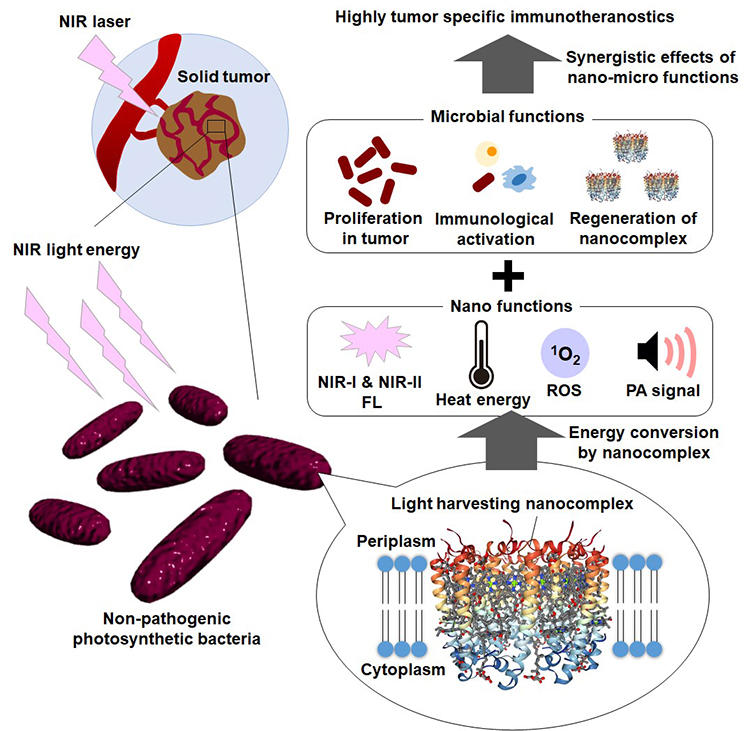Photosynthetic bacteria-based cancer optotheranostics
Highlights:
- Natural purple photosynthetic bacteria (PPSB) can play a key role as a highly active cancer immunotheranostics agent that uses the bio-optical-window I and II near-infrared (NIR) light.
- PPSB have high tumor specificity and non-pathogenicity.
- Active anticancer efficacy and powerful multi-functions such as NIR-I-to-NIR-II fluorescence, photothermal conversion, reactive oxygen species generation, and contrasty photoacoustic effect, can be expressed using NIR light exposure to PPSB.
Summary:
Cancer is one of the most thought-provoking healthcare problems throughout the world. The development of therapeutic agents with highly selective anti-cancer activities is increasingly attractive due to the lack of tumor selectivity of conventional treatments.
Scientists at Japan Advanced Institute of Science and Technology (JAIST) have created a photosynthetic bacteria-based cancer optotheranostics (Figure 1).
Discovered by Associate Professor Eijiro Miyako and his team from JAIST, natural purple photosynthetic bacteria (PPSB) can play a key role as a highly active cancer immunotheranostics agent that uses the bio-optical-window I and II near-infrared (NIR) light thanks to the light harvesting nanocomplexes in microbial membrane. The NIR light-driven PPSB would serve as an effective "all-in-one" theranostic material for use in deep tumor treatments.
At least, the present work has the following great advantages in comparison with other cancer treatments such as anticancer drug, nanomedicine, antibody, and conventional microbial therapies. 1) PPSB have high tumor specificity and non-pathogenicity; 2) Sufficient active cancer efficacy and multifunction such as NIR-I-to-NIR-II fluorescence (FL), photothermal conversion, reactive oxygen species (ROS) generation, and contrasty photoacoustic (PA) effect, can be simultaneously expressed using NIR light exposure without chemical functionalizations and genetic manipulations; 3) Complicated and expensive procedures for their production are unnecessary because they can be spontaneously proliferated by simple culturing in cheap medium.
The present experiments warrant further consideration of this novel theranostic approach for the treatment of refractory cancers. The team believes that the developed technology would advance cancer treatment for creating more effective medicine.
Paper titled "Optically activatable photosynthetic bacteria-based highly tumor specific immunotheranostics", published in Nano Today, one of the world's top journals in the field of nanoscience and technology, DOI: 10.1016/j.nantod.2021.101100
The work was supported by the Japan Society for the Promotion of Science KAKENHI Grant-in-Aid for Scientific Research (A) and the KAKENHI Fund for the Promotion of Joint International Research.
|
|
February 16 ,2021

